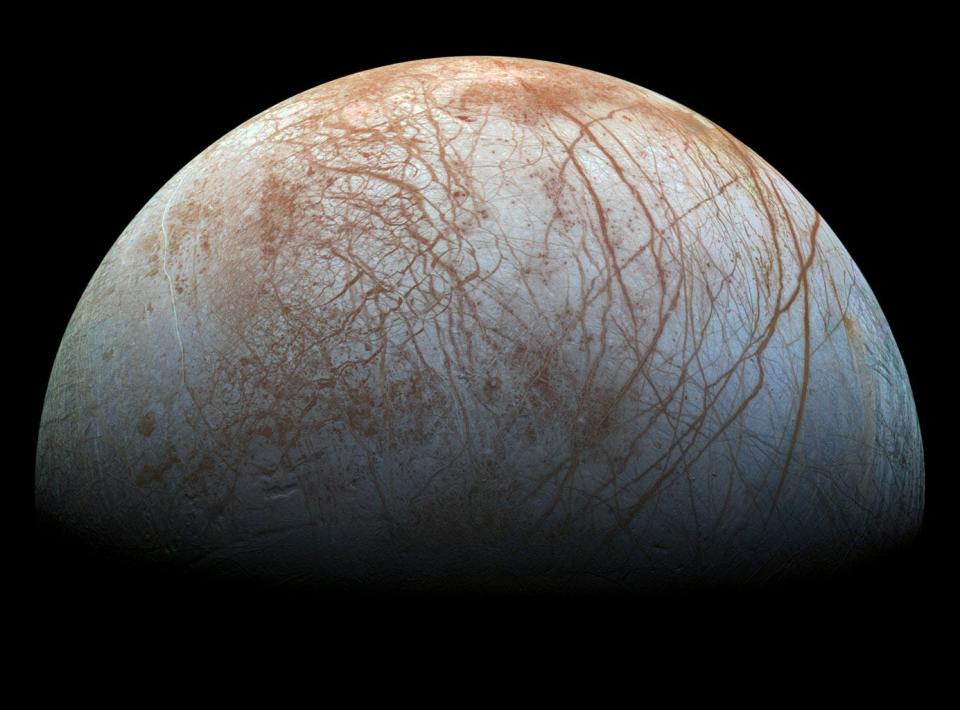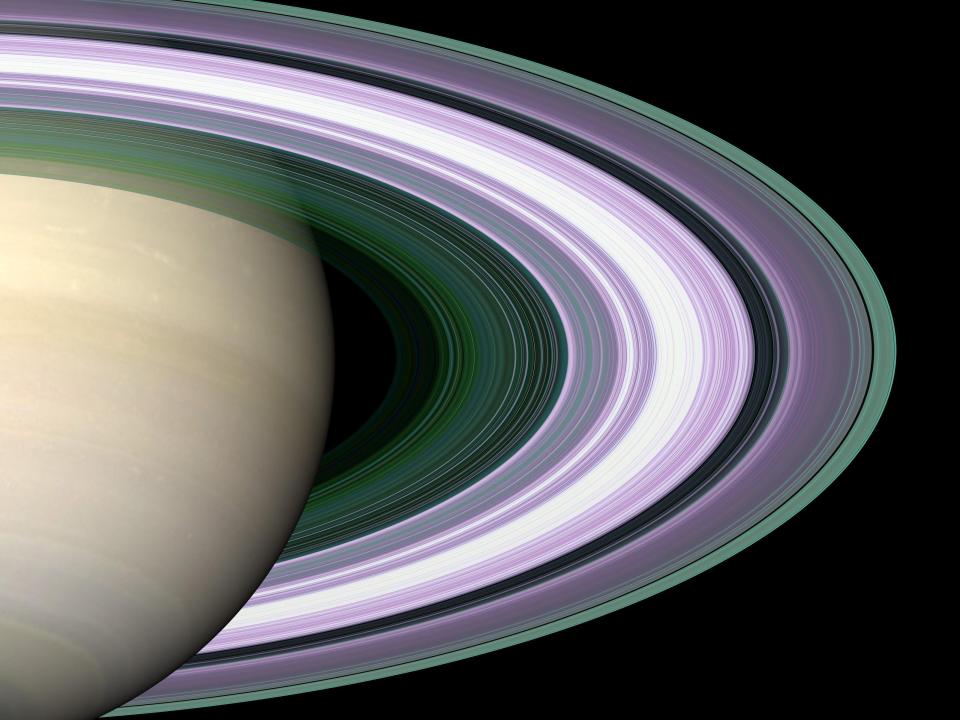Is there life in outer space? Why this expert says it could exist, even on Jupiter, Saturn
Life in our solar system could exist, even on the icy recesses of Jupiter and Saturn's moons, contends research by Maryland's Goddard Flight Facility.
Europa, a moon of Jupiter, and Enceladus, a moon of Saturn, have evidence of oceans beneath their ice crusts. A NASA experiment suggests that if these oceans support life, signatures of that life in the form of organic molecules, like amino and nucleic acids, could survive just under the surface ice despite the harsh radiation on these worlds.
“Based on our experiments, the ‘safe’ sampling depth for amino acids on Europa is almost eight inches (around 20 centimeters) at high latitudes of the trailing hemisphere in the area where the surface hasn’t been disturbed much by meteorite impacts,” said Alexander Pavlov of NASA’s Goddard Space Flight Center in Greenbelt.
More on Maryland water conservation Record sum for Maryland waterway improvements will boost Lower Shore sites. Here's how.
Pavlov, the lead author of the paper published July 18 in the journal entitled Astrobiology, noted the frigid surfaces of these nearly airless moons are likely uninhabitable due to radiation from both high-speed particles trapped in their host planet’s magnetic fields and powerful events in deep space, such as exploding stars.
Warm oceans under the ice? Yes, on moons of Saturn, Jupiter

However, both have oceans under their icy surfaces that are heated by tides from the gravitational pull of the host planet and neighboring moons.
“Subsurface sampling is not required for the detection of amino acids on Enceladus – these molecules will survive radiolysis (breakdown by radiation) at any location on the Enceladus surface less than a tenth of an inch (under a few millimeters) from the surface," Pavlov said.
Amino acids can be created by life or by non-biological chemistry. However, finding certain kinds of amino acids on Europa or Enceladus would be a potential sign of life because they are used by terrestrial life as a component to build proteins.
Proteins are essential to life as they are used to make enzymes which speed up or regulate chemical reactions and to make structures.
Latest business news: Ocean City opens new bayside bar, Rosenfeld's to open in Salisbury | What's Going There
Some life can survive extreme conditions in outer space

To evaluate the survival of amino acids on these worlds, the team mixed samples of amino acids with ice chilled to about minus 321 Fahrenheit (-196 Celsius) in sealed, airless vials and bombarded them with gamma rays, a type of high-energy light, at various doses.
Since the oceans might host microscopic life, they also tested the survival of amino acids in dead bacteria in ice. Finally, they tested samples of amino acids in ice mixed with silicate dust to consider the potential mixing of material from meteorites or the interior with surface ice.
The experiments provided pivotal data to determine the rates at which amino acids break down, called radiolysis constants. With these, the team used the age of the ice surface and the radiation environment at Europa and Enceladus to calculate the drilling depth and locations where 10 percent of the amino acids would survive radiolytic destruction.
More on future city goals What's next in charting Salisbury's future? You can make your voice heard on it
This article originally appeared on Salisbury Daily Times: How Maryland research found conditions for life in our solar system

